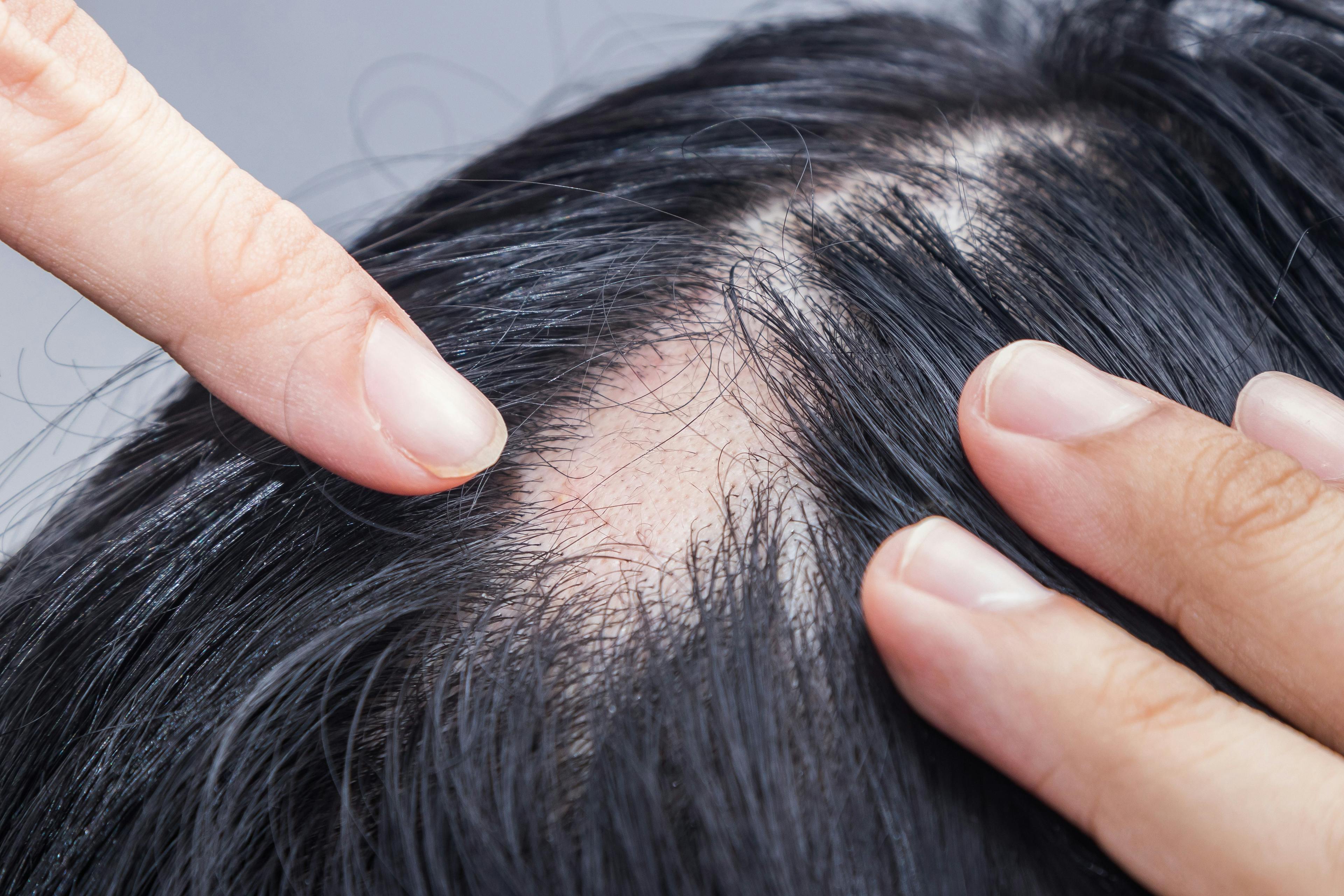- Acne
- Actinic Keratosis
- Aesthetics
- Alopecia
- Atopic Dermatitis
- Buy-and-Bill
- COVID-19
- Case-Based Roundtable
- Chronic Hand Eczema
- Chronic Spontaneous Urticaria
- Drug Watch
- Eczema
- General Dermatology
- Hidradenitis Suppurativa
- Melasma
- NP and PA
- Pediatric Dermatology
- Pigmentary Disorders
- Practice Management
- Precision Medicine and Biologics
- Prurigo Nodularis
- Psoriasis
- Psoriatic Arthritis
- Rare Disease
- Rosacea
- Skin Cancer
- Vitiligo
- Wound Care
Publication
Article
Dermatology Times
Hair Hang-Ups
Author(s):
In this month's Cosmetic Conundrums column, Dermatology Times® Chief Medical Editor Zoe Diana Draelos, MD, explores the world of hair, including ammonia-free hair dyes, how conditioner can prevent hair breakage, hair oiling, and more.
Q: Is it bad to oil hair?
Hair oiling is a very common practice in some cultures. Straight hair easily wicks sebum from the scalp to the ends of the hairs. Thus, individuals with straight hair typically do not engage in hair and scalp oiling because it makes the hair appear greasy. Individuals who have very curly or tightly kinked hair do not readily wick sebum from the scalp onto the hair. For this reason, hair oiling is used to moisturize the hair, add shine, and reduce friction to prevent breakage when grooming.
Zoe Diana Draelos, MD, chief medical editor, Dermatology Times®

There is some popular press linking scalp and hair oiling to hair loss, especially male and female pattern hair loss. The idea is that the oil somehow occludes the follicular ostia and prevents the hair from growing. This is not true. Hair oiling is basically a method for conditioning the hair if the hair is dry.
Q: Does hairspray cause dry hair?
Hairspray utilizes a polymer in a liquid solvent to spray polymer droplets on the hair shafts to adhere the hairs to one another. The flexible bonds that are created between the hair shafts allow the hair to remain in place to maintain a hairstyle. The solvent is a volatile vehicle for the polymer so that it rapidly evaporates without wetting the hair. Indeed, the solvent can be drying to the hair shaft. If hairspray is used frequently on the hair, an instant conditioner that is removed in the shower or a leave-in conditioner that is applied to towel-dried hair may be useful.
Q: Is hair conditioner use necessary to prevent hair breakage?
Hair conditioner is designed to replace the effect of sebum on the hair shaft in individuals who shampoo aggressively. Sebum is the perfect hair conditioner. It imparts shine to the hair shaft and decreases combing friction and static electricity, thereby improving manageability. The problem is that sebum can sustain the growth of bacterial and fungal organisms that cause scalp disease and body odor. Shampoo is designed to remove all of the sebum from the hair shaft. However, the hair becomes dull and unmanageable in the process. An instant conditioner that is applied after shampooing adds shine by coating the hair with dimethicone and reduces static electricity with the silicone and quaternary ammonium compounds. Since the conditioner leave-behind ingredients do not support microbial growth, the hair is beautified without the hygiene problems.
Conditioners can prevent hair breakage by reducing combing and brushing friction. Smoothing the cuticle reduces friction and the grooming implements can glide over the hair shafts.
Q: Are the new ammonia-free hair dyes better for your hair?
Some newer permanent hair dyes are replacing ammonia to attempt to decrease hair damage. The replacement ingredient is known as monoethanolamine (MEA). It does not have the odor of ammonia, and it does not cause eye or respiratory irritation as readily as ammonia. In addition, it is not as damaging to the hair as ammonia. It functions as an alkaline agent, just like ammonia, to lift up the protective cuticle on the outside of the hair shaft and allow the dyestuffs to enter the hair shaft and create the desired permanent color. MEA is made from coconut oil and has a large molecular weight, so it does not get absorbed into the scalp.
MEA is more expensive than ammonia and is currently found in higher-end, higher-quality permanent hair dye products. It is used in concentrations of 6% in darker shades and 10% in lighter blonde shades. One limitation of MEA is that it cannot create light blonde shades from naturally dark hair. Although MEA is not as damaging as ammonia, hair dyes that use MEA still weaken the hair shaft and can precipitate hair breakage. Less breakage may be caused by MEA-based hair dyes, but care is still required when handling the dyed hair. Any permanent hair dye will cause permanent damage to the hair shaft, resulting in more breakage.

Newsletter
Like what you’re reading? Subscribe to Dermatology Times for weekly updates on therapies, innovations, and real-world practice tips.




























